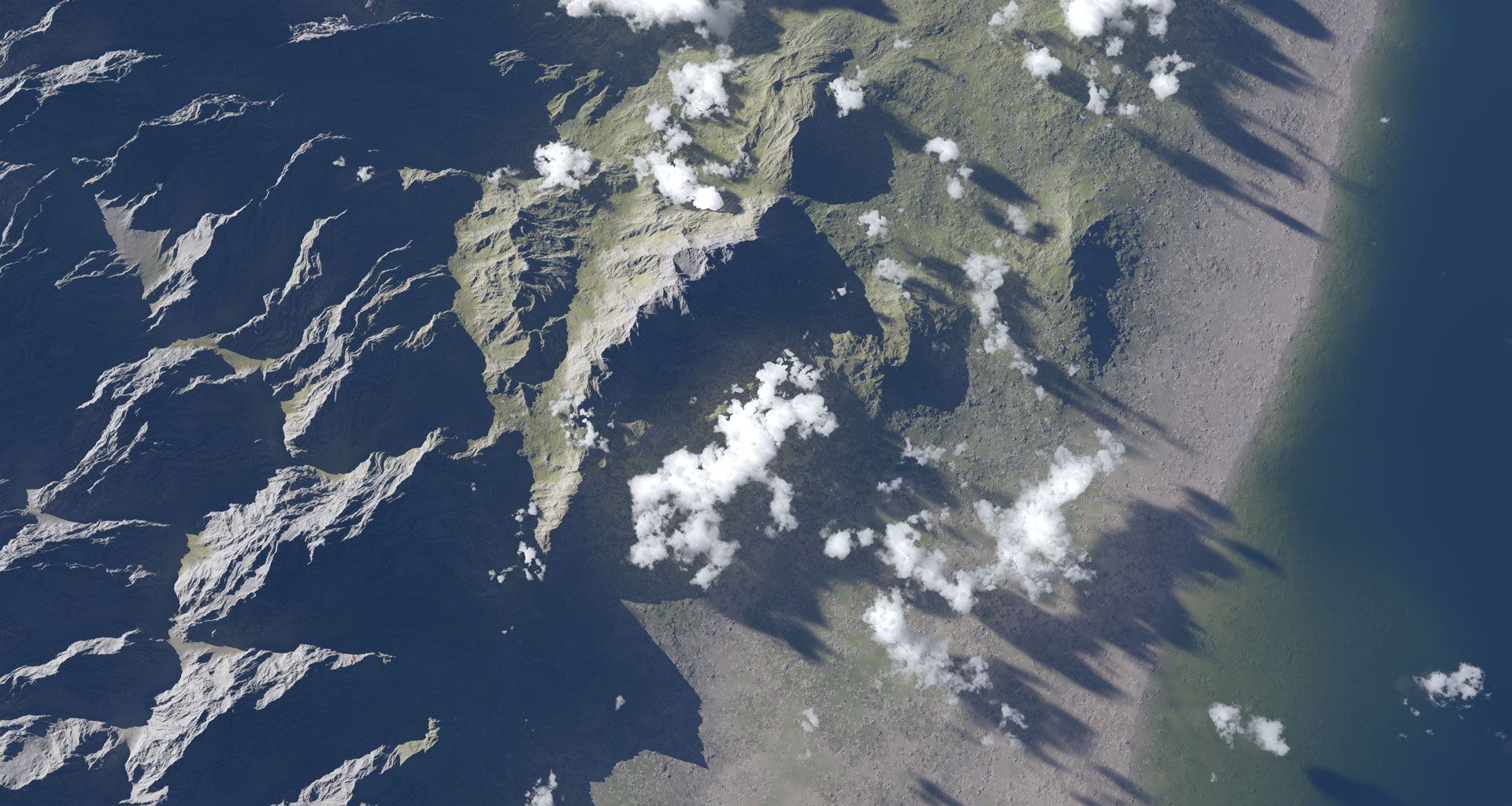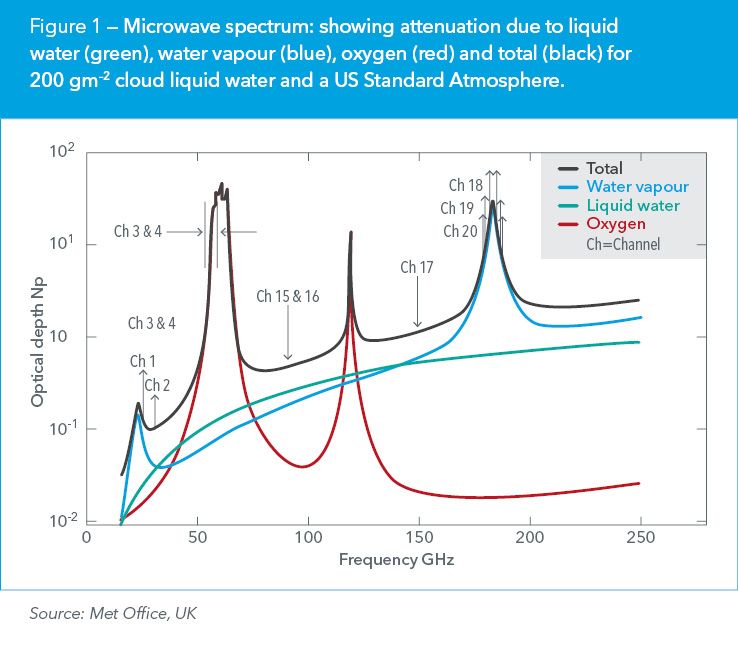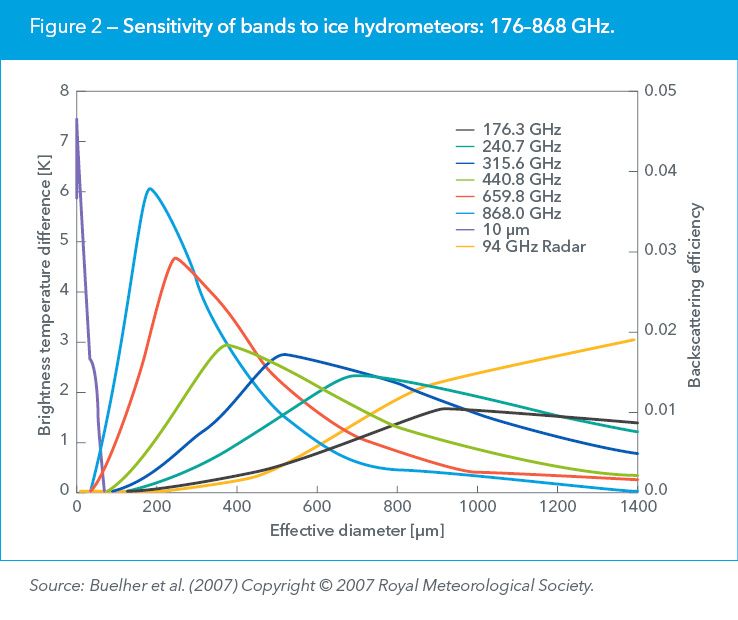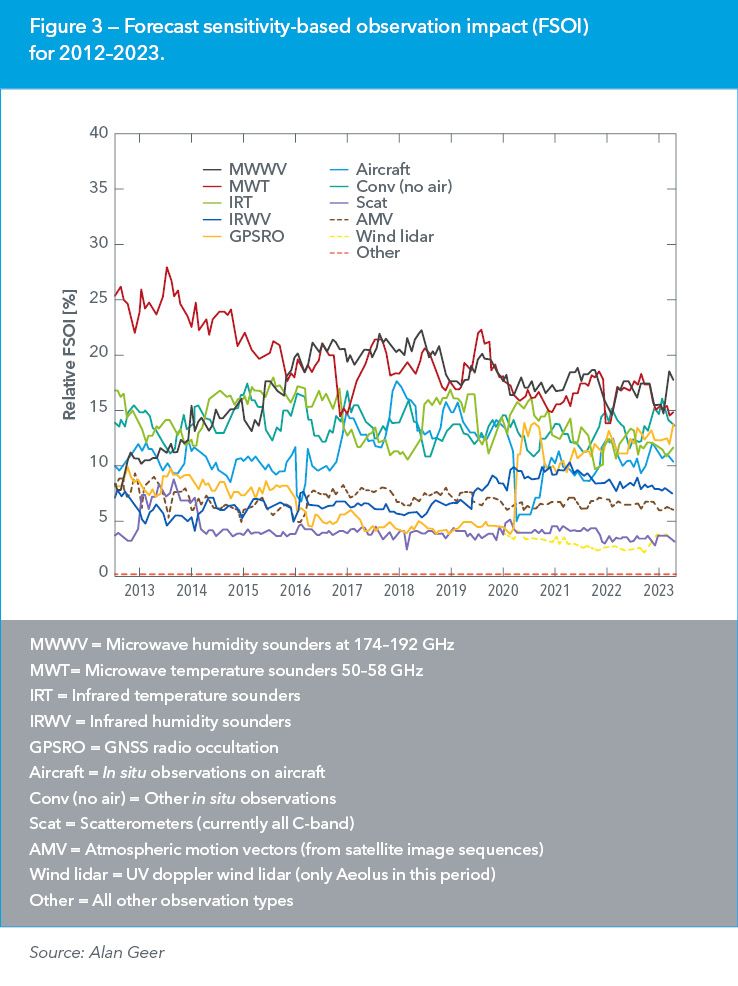
Passive microwave remote sensing for numerical weather prediction


Stephen English, Deputy Director of Research,
European Centre for Medium-Range Weather Forecasts
Passive microwave observations are crucial for numerical weather prediction (NWP), climate modelling, and disaster preparedness.
As the World Radiocommunication Conference, WRC‑23, approaches, these and other vital services need regulatory protection.
NWP underpins key goals in the United Nations 2030 Agenda for Sustainable Development and the Sendai Framework for Disaster Risk Reduction. Its “quiet revolution” in meteorology has mitigated weather-related disaster risks, reducing losses in lives and livelihoods (Nature, vol. 525, 2015).
Combining observations with numerical models allows us to predict the future state of the Earth system, including weather, ocean, land surface, snow, sea ice, and atmospheric conditions.
Why NWP models need protected frequency bands
Satellite instruments observe the Earth in many spectral frequency bands. Radio-spectrum observations, uniquely, can penetrate clouds, often where information is most needed.
Specified bands — some included in footnote 5.340 of the Radio Regulations — provide different kinds of weather-related information.
For example:
- 1.400–1.427, 6.9–7.0, 10.6–10.7, 18.6–18.8, 23.6–24, 31.3–31.5 and 36–37 gigahertz (GHz) — Earth’s surface and near-surface atmosphere;
- 50.2–57.3 GHz, 87–91, 115–122, 165–166, 176–191, 228–230 GHz — 3‑D atmospheric temperature, water vapour and liquid phase clouds;
- 241–245, 314–336, 439–457 and 657–671 GHz — ice-phase clouds; and
- 486–504 and 540–580 GHz — atmospheric trace gases.
Spectral features between 1 GHz and 250 GHz (see Figure 1) show:
- two water vapour spectral absorption lines close to 22 GHz and 183 GHz;
- oxygen lines close to 118 GHz; and
- a group of oxygen lines between 50.2 and 57.3 GHz.

Passive sensors observing such natural emissions, however, are sensitive even to very low levels of radio-frequency interference.
Ice-cloud information from bands above 200 GHz will soon be available via the Ice Cloud Imager and Arctic Weather Satellite. Several bands are needed in the range 176–868 GHz to capture various ice-cloud hydrometeor sizes (see Figure 2).

Why radio-frequency observation matters in forecasting
Radio frequency-observations used by the European Centre for Medium-Range Weather Forecasts (ECMWF) provide the largest error reduction of any weather observation type (see Figure 3).

The value of Earth-exploration satellites for weather forecasts has been reported widely, including at ECMWF in 2018 and Radio Frequency Interference (RFI) workshops in 2019 and 2022, and in literature, such as Bormann et al. (2019) and Randriamampianina et al. (2021).
Satellite data records for essential climate variables, going back over four decades, enable climate monitoring both through instrument-based climate data records (CDRs) and integration into “re-analysis” in a modified NWP system.
European databases, such as EUMETSAT’s Satellite Application Facilities and the ESA Climate Change Initiative, have further enriched global climate knowledge.
The resulting “maps without gaps” — like ERA-5, produced by the Copernicus Climate Change Service, operated by ECMWF on behalf of the European Commission — increasingly inform climate change mitigation and adaptation. Long-term space-based observation is needed to monitor future changes.
Protecting EESS bands from interference
Several WRC‑23 discussion topics relate to weather and climate services, and the World Meteorological Organization (WMO) has published a position statement on these. Earth observations around 7 GHz, used to monitor ocean temperatures (agenda item 1.2), are a particular concern.
The Radio Regulations provision on passive microwave sensor measurements (footnote 5.458) stops short of allocating spectrum to the Earth-observation satellite service (EESS), which could therefore be adversely affected by International Mobile Telecommunications (IMT-2020/5G) using the same frequency.
The WRC‑23 agenda also affects 10.65 GHz (agenda item 1.2), 18.7 GHz (1.16 and 1.17) and 36.5 GHz (9.1d) — relevant for liquid clouds and terrestrial surfaces — and several other EESS bands (9.1c).
Decisions are needed to preserve global measurements in these unique passive-sensing bands.
European Scientists on Spectrum for Earth Observation (ESSEO) — an initiative led by the European Space Agency — will provide further scientific support for WMO’s positions, both at WRC‑23 and in another four years at WRC‑27.
Weather forecasting is of tremendous socio-economic importance. Appropriate protection for it, therefore, needs to be maintained in the Radio Regulations.
Download your copy of the ITU News Magazine: Science services.
Header image credit: Adobe Stock
